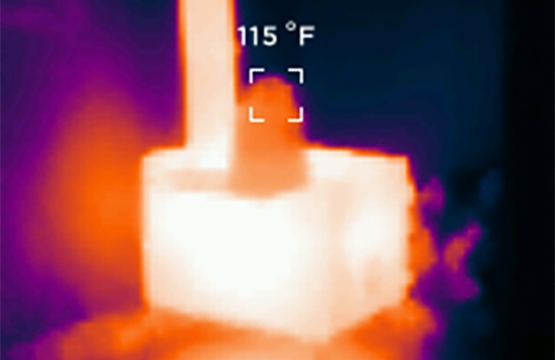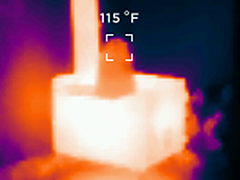

Even small structures that you wouldn’t think about can be inspected for thermal performance. Such as my canvas tent in early season camping. Applying the fundamentals for buildings I can see that the double flapped windows (2 layers of canvas one on the inside and one on the outside) are retaining more heat than the 13 oz/sqft canvas that the tent is made of. The heat source is a wood burning stove. With a ∆T (delta temperature) from inside to outside of 30° F on the walls of the tent. Which is a 16’ x 16’ officers style tent with an attached room that measures 16’ wide by 12’ long (that area is not heated) the imager that I used is a Seek Thermal Rebel. But even with the lower resolution image we can see the areas of heat loss, the thermal envelope, and areas where the heat loss is lower.


Images such as these showing that the second layer of canvas with a small air gap reduces the heat loss, lead me to creating an insulating hanging wall of fleece to create a thermal break (small air space) between the canvas of the wall and the interior. This allows the tent to be used in subzero temperatures with relative comfort during late season and winter camping trips.
So, you don’t have to be working on a multi-million-dollar structure to get results. All you have to do is apply the fundamentals of building inspections and know the direction of heat flow.